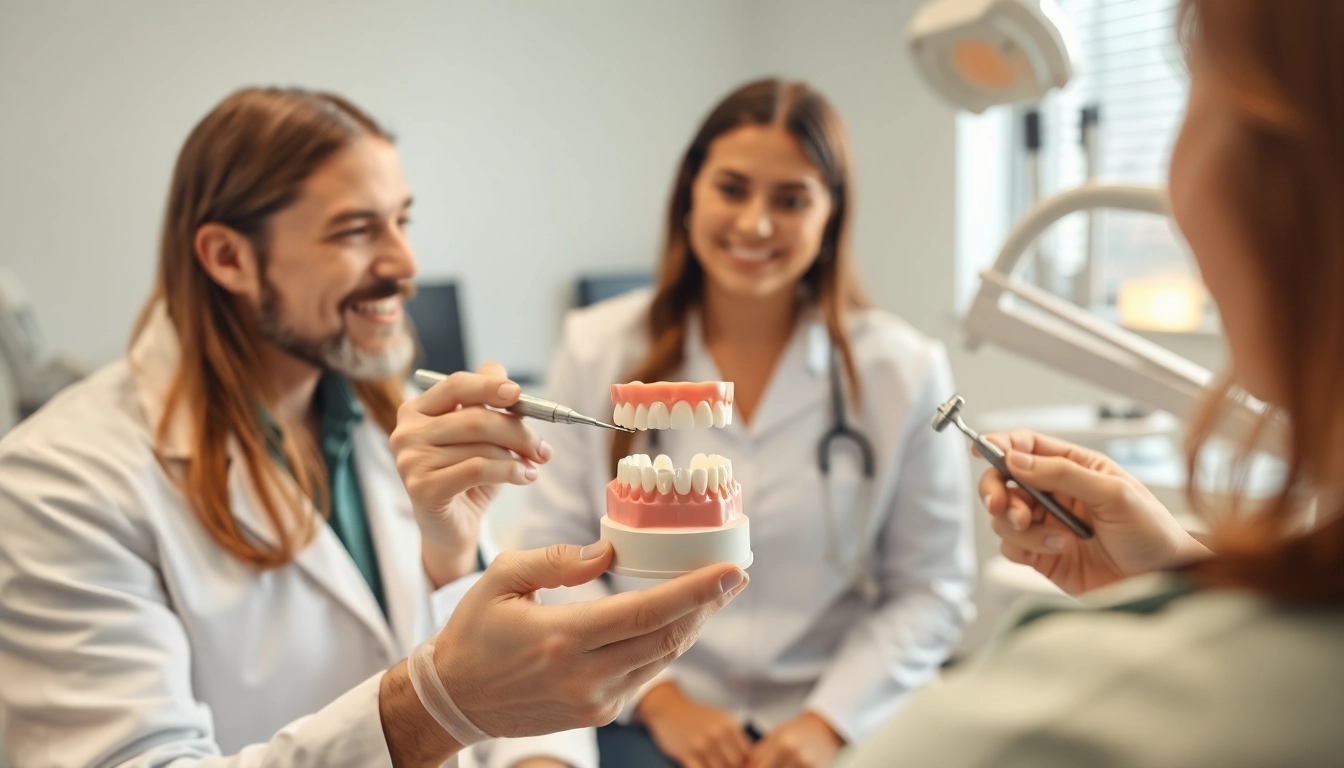What Are Dental Crowns?
Definition and Purpose of Crowns
A dental crown, often referred to as a cap, is a tooth-shaped restoration designed to cover a damaged tooth or restore its functional and aesthetic qualities. Whether due to decay, fracture, or wear, crowns serve a crucial purpose in maintaining the tooth’s integrity and enhancing oral health. They can also be utilized to support dental implants or to secure dental bridges, thus playing a multifaceted role in restorative dentistry. For many individuals requiring dental work, understanding the role of crowns is an essential step towards achieving a healthier smile.
Common Reasons for Needing Crowns
There are several reasons why a dentist might recommend a crown:
- Severe Decay: When tooth decay is extensive and a filling would not suffice, a crown can provide necessary support.
- Cracked or Worn Teeth: Teeth that have been damaged due to grinding or injury can be restored to function with a crown.
- After a Root Canal: If a tooth has undergone a root canal treatment, it often needs reinforcement, which a crown provides.
- Cosmetic Improvements: Crowns can improve the appearance of discolored or misshapen teeth, shaping them to match surrounding teeth.
- Supporting Dental Bridges: Crowns can anchor a bridge that replaces missing teeth.
Types of Crowns Available
Dental crowns come in various materials, each with its unique characteristics:
- Porcelain Crowns: Highly aesthetic and especially beneficial for front teeth.
- Ceramic Crowns: Used for both front and back teeth, offering durability and aesthetics.
- Metal Crowns: Typically made from gold or other metals, they are extremely durable but less visually appealing.
- Porcelain-Fused-to-Metal (PFM) Crowns: Combining metal strength with porcelain beauty, these crowns may be recommended where aesthetics and durability are required.
The Procedure for Getting a Crown
Initial Consultation and Diagnosis
The process of getting a dental crown begins with an initial consultation where the dentist evaluates the need for a crown. This may involve x-rays to assess the tooth’s root and surrounding bone structure. The dentist discusses the various material options, addressing any concerns you might have about aesthetics, cost, or sensitivity.
Step-by-Step Crown Placement Process
Getting a dental crown typically involves multiple visits:
- Tooth Preparation: The dentist reshapes the damaged tooth to allow for the crown to fit comfortably.
- Impressions: A mold of the shaped tooth is taken to create a custom crown. This may involve digital scanning or traditional molds.
- Temporary Crown: A temporary crown is often placed to protect the tooth while the permanent one is being fabricated.
- Crown Placement: On the follow-up visit, the temporary crown is removed, and the permanent crown is fitted, adjusted, and cemented in place.
Aftercare and Maintenance Tips
After receiving a crown, it is vital to maintain good oral hygiene. Here are some aftercare tips:
- Practice diligent oral hygiene, including brushing twice daily and flossing regularly.
- Avoid sticky or hard foods that can dislodge or damage the crown.
- Schedule regular dental check-ups to monitor the crown and surrounding teeth.
- If you experience any pain or sensitivity, consult your dentist promptly.
Types of Dental Crowns Explored
Porcelain and Ceramic Crowns
Porcelain and ceramic crowns are favored for their aesthetic appeal. They mimic the natural tooth color and are an excellent option for front teeth. Both materials are biocompatible, meaning they are less likely to cause allergic reactions. However, porcelain may be more susceptible to chips and fractures compared to other materials.
Metal Crowns: Advantages and Disadvantages
Metal crowns, including those made from gold or nobel metals, offer unparalleled strength and durability. They withstand heavy chewing forces, making them ideal for back teeth. The main disadvantage is their appearance—metal crowns are highly visible and may not be desirable for aesthetic reasons in the front of the mouth.
Porcelain-Fused-to-Metal Crowns
PFM crowns combine the benefits of metal and porcelain. The underlying metal provides strength, while the porcelain gives a visually appealing exterior. However, over time, the porcelain may wear away, exposing the metal underneath, which can compromise aesthetic appeal. Proper care and regular dental visits can mitigate these issues.
Costs Associated with Dental Crowns
Average Prices for Different Types of Crowns
The cost of dental crowns can vary widely based on material choice, location, and the complexity of the procedure. Here are general price ranges:
- Porcelain Crowns: $800 – $3000 per tooth
- Ceramic Crowns: $800 – $2500 per tooth
- Metal Crowns: $500 – $1500 per tooth
- Porcelain-Fused-to-Metal Crowns: $500 – $1500 per tooth
Insurance Coverage and Financing Options
Many dental insurance plans partially cover the cost of crowns, classifying them under restorative dentistry. It is crucial to verify coverage details with your provider before proceeding. Some dental practices offer payment plans or financing options to help patients manage the cost.
Factors Influencing Crown Costs
Several factors can influence the cost of dental crowns:
- Location: Urban areas may have higher dental costs compared to rural locales.
- Material Selection: Crowns made from premium materials usually come with a higher price tag.
- Dentist’s Experience: The dentist’s skill and reputation can also affect the pricing.
- Complexity: Any additional procedures required, such as root canals or tooth extractions, will increase the overall cost.
Potential Risks and Complications of Crowns
Understanding Complications Post-Procedure
Although generally safe, crowns do come with some potential risks and complications:
- Allergic Reactions: Some patients may be allergic to the materials used in their crowns, leading to discomfort or inflammation.
- Tooth Sensitivity: Temporary sensitivity to hot or cold temperatures can occur after crown placement.
- Crown Failure: In rare cases, crowns may come loose or fracture, necessitating early replacement.
Managing Discomfort and Sensitivity
To manage discomfort or sensitivity post-procedure, consider the following:
- Over-the-counter pain relievers can help ease discomfort.
- Using desensitizing toothpaste may reduce sensitivity over time.
- Avoiding extremely hot or cold foods can minimize discomfort.
When to Consult Your Dentist
If you experience persistent discomfort, noticeable movement of the crown, or signs of infection such as swelling or prolonged pain, it is essential to consult your dentist promptly. Early intervention can prevent more severe complications from arising.














Leave a Reply